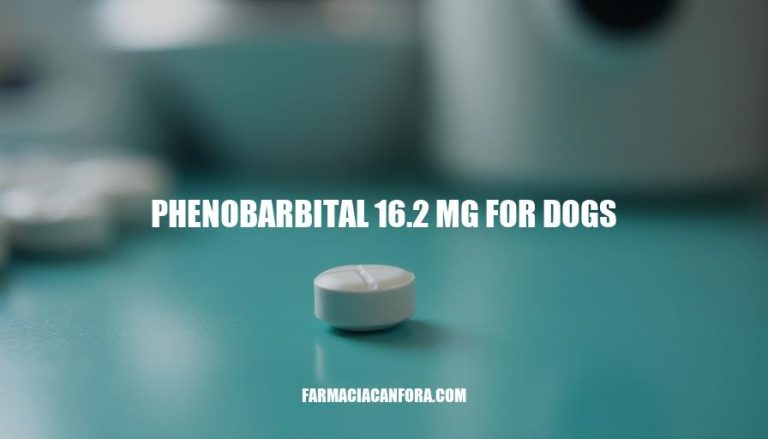


Phenobarbital is a medicine used to help dogs with seizures. It works by calming down their nervous system, which helps reduce how often and severely they have seizures. Seizures can be caused by things like epilepsy, brain tumors, or injuries.
Phenobarbital is very good at controlling seizures, so it’s often the first choice for vets when treating this condition.
Administering phenobarbital 16.2 mg to dogs requires careful attention to dosage, potential side effects, and ongoing monitoring. Here are the detailed instructions:
Dosage: Administer 16.2 mg of phenobarbital orally, typically 2-3 times daily. Most dogs take it twice daily for convenience.
Timing: Give the medication at the same times each day to maintain consistent blood levels.
Missed Dose: If a dose is missed, give it as soon as remembered, and then continue with the next scheduled dose.
Do not double the dose to catch up.
With or Without Food: Phenobarbital can be given with or without food. However, if your dog experiences stomach upset, try giving it with food.
Storage: Keep the medication at room temperature, away from light and moisture. Do not refrigerate.
Safety: Incorrect dosing can lead to serious side effects or even death.
Effectiveness: Proper dosing ensures the medication effectively controls seizures.
Monitoring: Regular blood tests are necessary to ensure the medication is at a therapeutic level and to monitor for potential liver damage.
Sedation: Dogs may appear drowsy or lethargic, especially when starting the medication.
Increased Thirst and Urination: Phenobarbital can cause dogs to drink more water and urinate more frequently.
Increased Appetite and Weight Gain: Some dogs may eat more and gain weight.
Liver Damage: Long-term use can cause liver damage, which may present as jaundice, weight loss, vomiting, or dark urine.
Behavioral Changes: Restlessness, aggression, or anxiety may occur.
Gastrointestinal Upset: Vomiting, diarrhea, or constipation can happen.
Hair Loss: Some dogs may experience hair loss or thinning of the coat.
Seizure Frequency: Keep track of how often seizures occur and report any changes to your veterinarian.
Behavior and Activity Level: Monitor for signs of sedation, restlessness, or changes in behavior.
Appetite and Weight: Watch for changes in appetite and weight gain.
Thirst and Urination: Note any increase in drinking or urination.
Liver Function: Regular blood tests are crucial to monitor liver function and detect any early signs of liver damage.
Overall Health: Watch for any signs of jaundice, vomiting, or dark urine, which could indicate liver issues.
By following these detailed instructions and closely monitoring your dog, you can help ensure the safe and effective use of phenobarbital to manage seizures.
Phenobarbital is a medication used to help manage seizures in dogs, particularly those caused by epilepsy, brain tumors, or injuries. It works by calming the nervous system and reducing seizure frequency and severity.
Administering phenobarbital 16.2 mg requires careful attention to dosage, potential side effects, and ongoing monitoring. The recommended dosage is 16.2 mg orally, given 2-3 times daily, with consistent timing to maintain blood levels. If a dose is missed, it should be given as soon as remembered, but not doubled.
It’s essential to follow the veterinarian’s dosage recommendations, as incorrect dosing can lead to serious side effects or even death. Regular blood tests are necessary to ensure the medication is at a therapeutic level and to monitor for potential liver damage.
Common side effects of phenobarbital include sedation, increased thirst and urination, increased appetite and weight gain, liver damage, behavioral changes, gastrointestinal upset, and hair loss. Owners should closely monitor their dog’s seizure frequency, behavior, appetite, weight, thirst, urination, and overall health during treatment.
Proper use of phenobarbital can effectively manage seizures in dogs, but it requires careful attention to dosage and potential side effects. Consult with a veterinarian before starting any medication, including phenobarbital, to ensure safe and effective use.